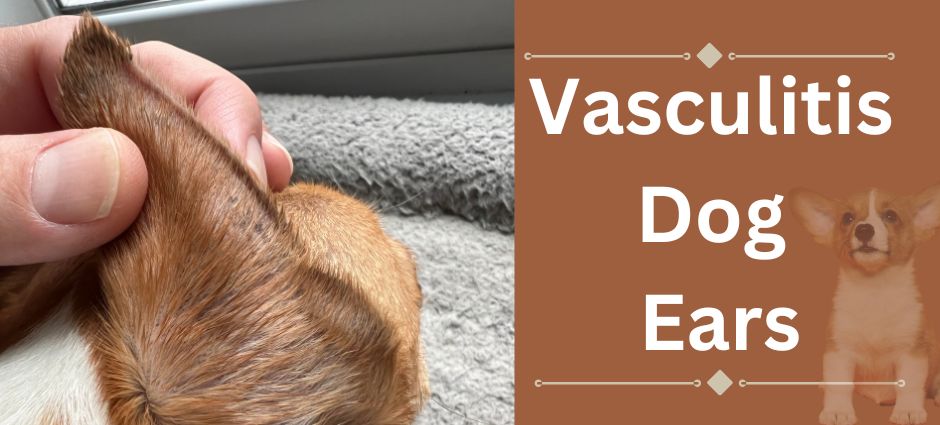Does your dog seem to be having trouble with their ears? Are they constantly shaking their head, scratching, or experiencing noticeable changes in their ear flaps? If so, there’s a chance they might be suffering from vasculitis dog ears, a condition that requires veterinary attention.
This blog post aims to break down everything you need to know about vasculitis in dog ears. We’ll delve into the causes, symptoms, diagnosis, and treatment options available, empowering you to support your canine companion through this challenge.
What is Vasculitis Dog Ears (Pinnal Vasculitis)?
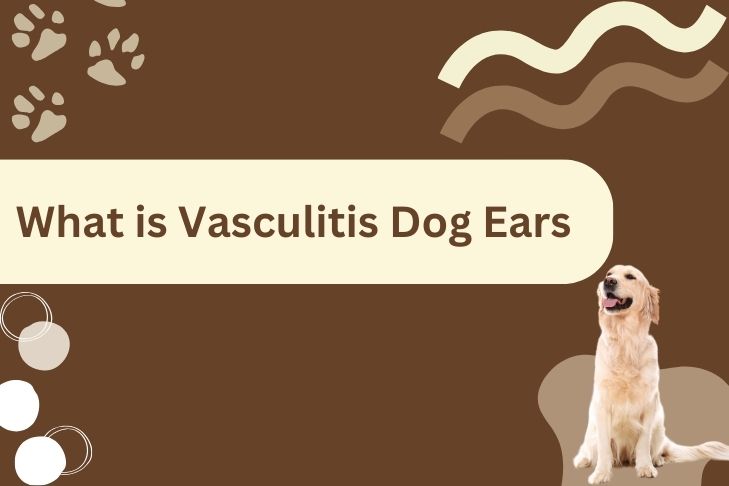
Vasculitis, in general, refers to inflammation of the blood vessels. When it affects the ear flaps (pinnae) of dogs, it’s called pinnal vasculitis. Moreover, the inflammation damages the blood vessels, obstructing proper blood flow to the ears’ tissue. This lack of blood supply leads to various issues in the affected area.
While uncommon, pinnal vasculitis in dogs can cause significant discomfort and even permanent damage to the dog ear pinna if left untreated. So, staying informed about this condition is crucial.
What Causes Vasculitis Dog Ears?
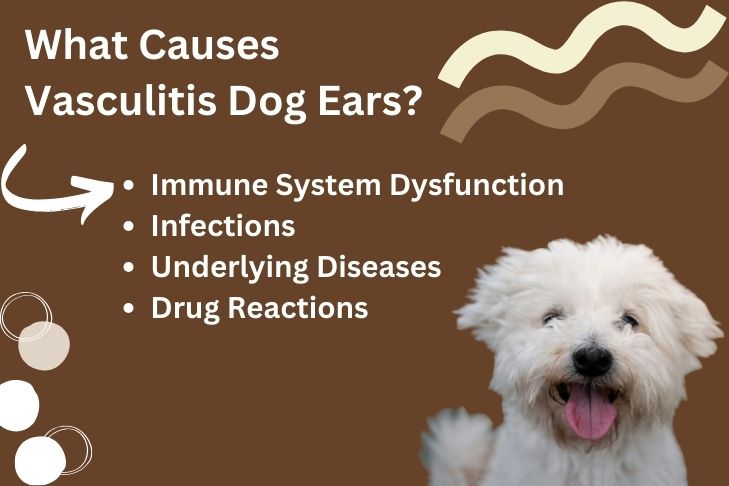
The exact cause of pinnal vasculitis in dogs often remains unknown. However, there are a few factors that are suspected to contribute to the cause:
- Immune System Dysfunction: An inappropriate immune response can mistakenly attack the blood vessels in the ear flaps.
- Infections: Bacterial or parasitic infections can sometimes trigger vasculitis.
- Underlying Diseases: Certain diseases, like lupus or cancer can lead to vasculitis as a secondary complication.
- Drug Reactions: In rare cases, medication can induce a reaction that manifests as vasculitis.
- Environmental Allergies: Allergies to things like pollen or dust mites might play a role in some cases.
It’s important to consult a veterinarian to determine the underlying cause of your dog’s vasculitis for effective treatment.
Symptoms of Vasculitis Dog Ears:
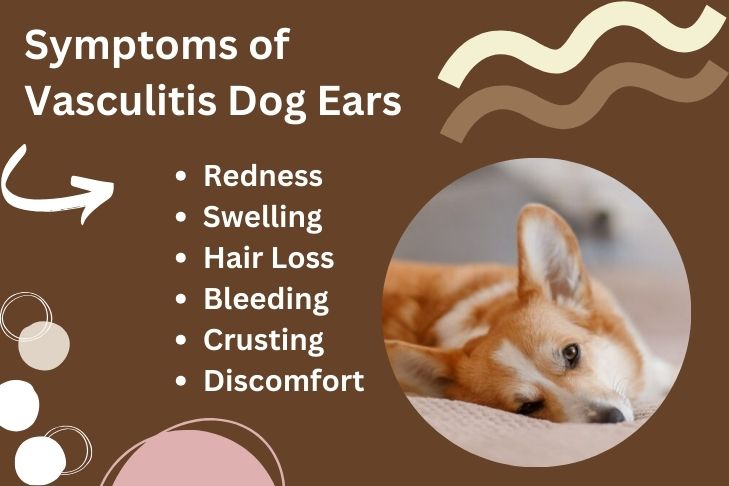
Early recognition of pinnal vasculitis is essential for prompt treatment and better outcomes. Check out some signs here:
- Redness and Swelling: The affected ear flap(s) may appear red, inflamed, and swollen due to the inflammation.
- Hair Loss and Ulceration: As the inflammation progresses, hair loss around the affected area becomes common. In some cases, mouth ulcers or open sores can develop.
- Crusting and Scabbing: The damaged tissue can dry out and form crusts and scabs.
- Bleeding: Bleeding might occur due to the damaged blood vessels, particularly if your dog scratches or shakes their head excessively.
- Pain and Discomfort: The inflammation and damage to the ear tissue can cause significant discomfort, leading to head shaking, scratching, whimpering, or shying away when the ear is touched.
- Changes in Ear Shape: In chronic or severe cases, permanent changes in the dog ear shape can occur due to tissue damage and scarring.
Diagnosing Vasculitis Dog Ears: What to Expect at the Vet
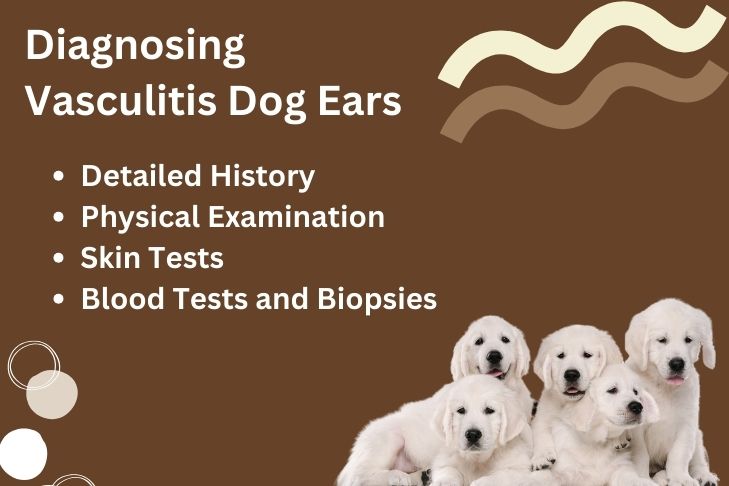
When you bring your dog to the vet with a suspected case of vasculitis, a thorough examination will be conducted. This may involve:
- Detailed History: The vet will ask about your chunky dog’s medical history, recent activities, and any medications they’re taking.
- Physical Examination: They will closely examine your dog’s ears and any other areas showing signs of inflammation.
- Skin Tests: Skin tests might be performed to rule out allergies as a potential trigger.
- Blood Tests and Biopsies: In some cases, blood tests and skin biopsies might be needed to determine the underlying cause and differentiate vasculitis from other skin conditions.
Based on the findings, the veterinarian will develop a treatment plan tailored to your large furry dog‘s specific needs.
Treatment Options for Vasculitis Dog Ears
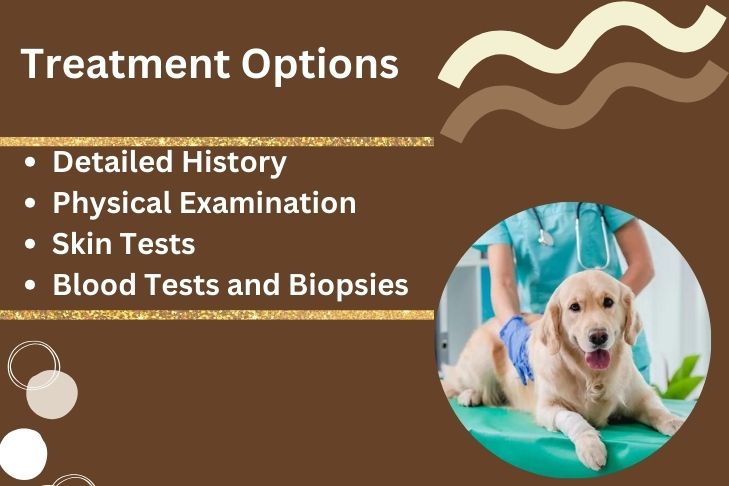
The treatment approach for pinnal vasculitis depends on the underlying cause and severity of the condition. Here are some of the common treatment options:
- Medications: Anti-inflammatory medications, immunosuppressive drugs (to suppress an overactive immune system), and antibiotics (if an infection is suspected) are commonly used.
- Dietary Changes: If allergies are suspected, your veterinarian might recommend a hypoallergenic diet to eliminate potential triggers.
- Supportive Care: Cleaning and disinfecting the affected ear flaps to prevent secondary infections and pain management medications can be part of the treatment plan.
- Addressing Underlying Causes: If an underlying disease is identified as the cause, treatment will also be directed towards managing that disease.
Note: Learn about dog ear polyps which can also be an alarming health condition in your lovely pup.
Empowering Dog Lovers with Reliable Information on Vasculitis Dog Ears
Facing a health concern with your giant furry friend can be stressful. Claw Hive aims to be your trusted information source on all things dog-related. Here, you can find reliable and insightful resources to navigate your dog’s health journey.



